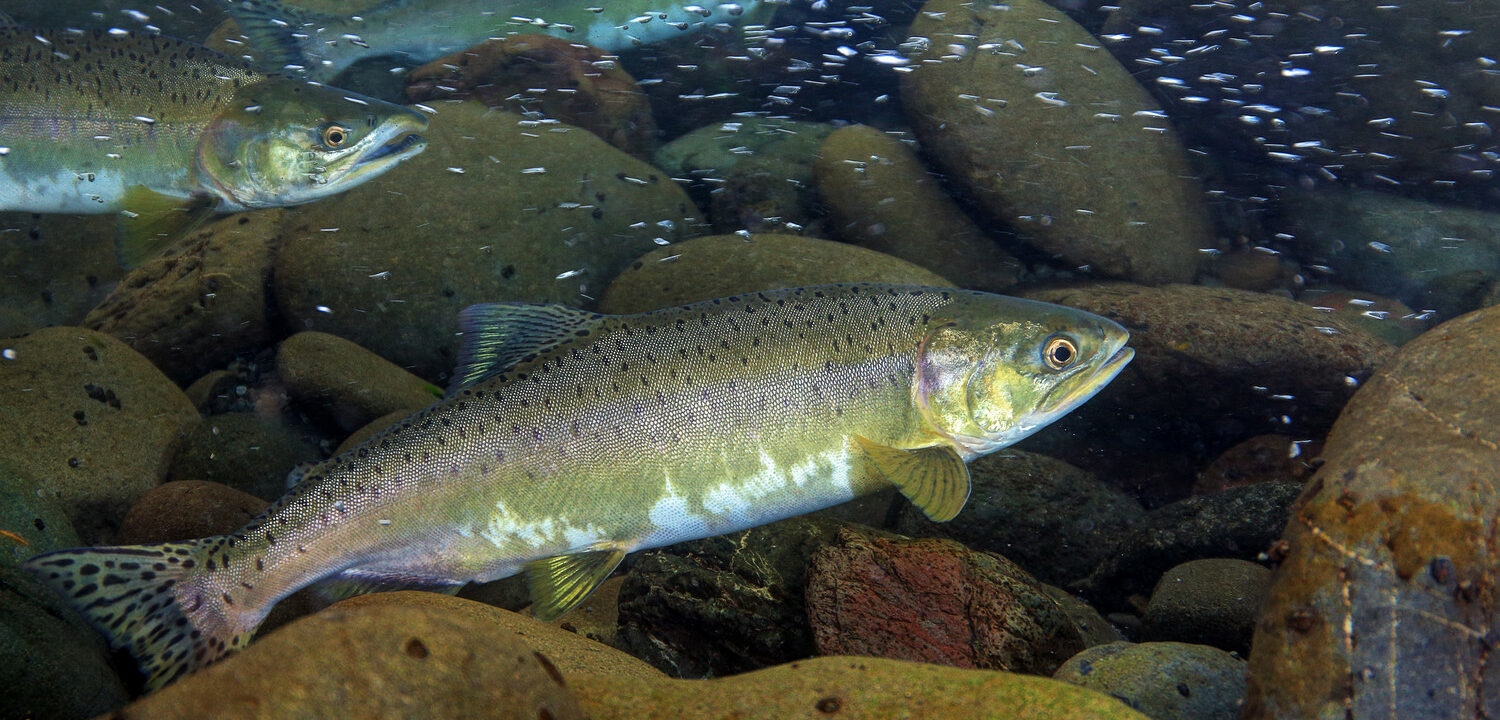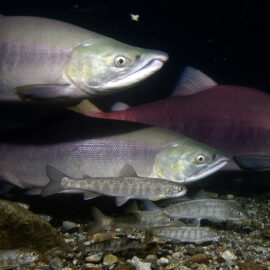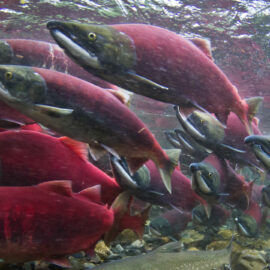Pink salmon are the most abundant of Pacific salmon. They (along with masu) are the smallest; pink are also the most limited upriver migrators, and, with regard to life history diversity, the most homogenous and predictable.
Pink salmon, a high-volume commercial species, exhibit the lowest risk of extinction among Oncorhynchus across the North Pacific, except at the southern edge of their range. Notable is the finding that of all North Pacific salmon, pink is the only species that does not exhibit a pattern of moderate extinction risk across the Russian Far East.
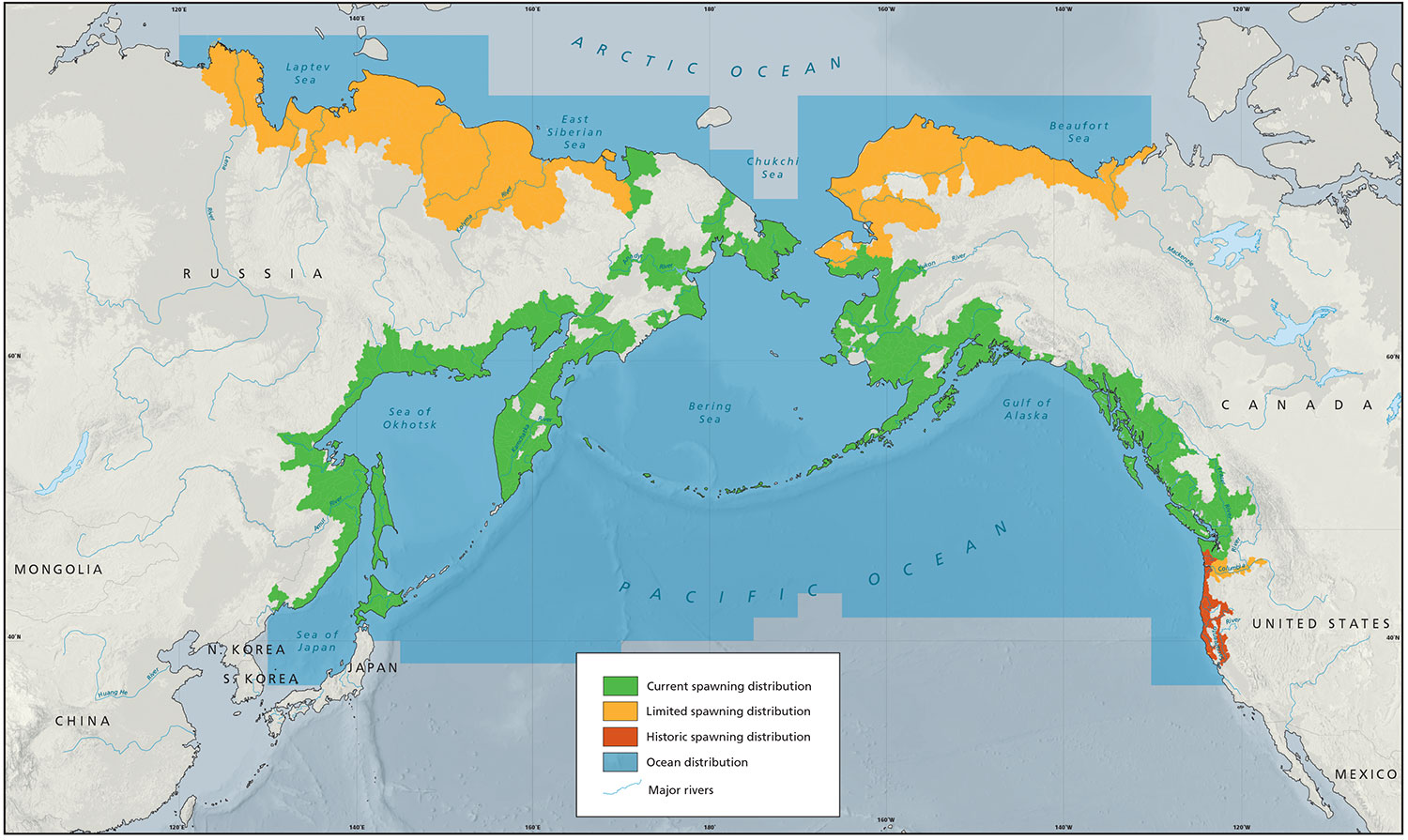
As with chum, pink demonstrate the highest straying rates among migrating salmon—up to 10 percent. They are widely distributed and even expanding in coastal areas draining into the Arctic Ocean. Also like chum, pink prefer colder waters, which may explain straying to the Arctic Ocean during warmer years. Pink have been extirpated south of the Columbia River basin, with limited spawning into the basin. Our map provides whole-basin data, aggregated for even- and odd-year classes, watershed boundaries, and the best available information on upriver extent. |
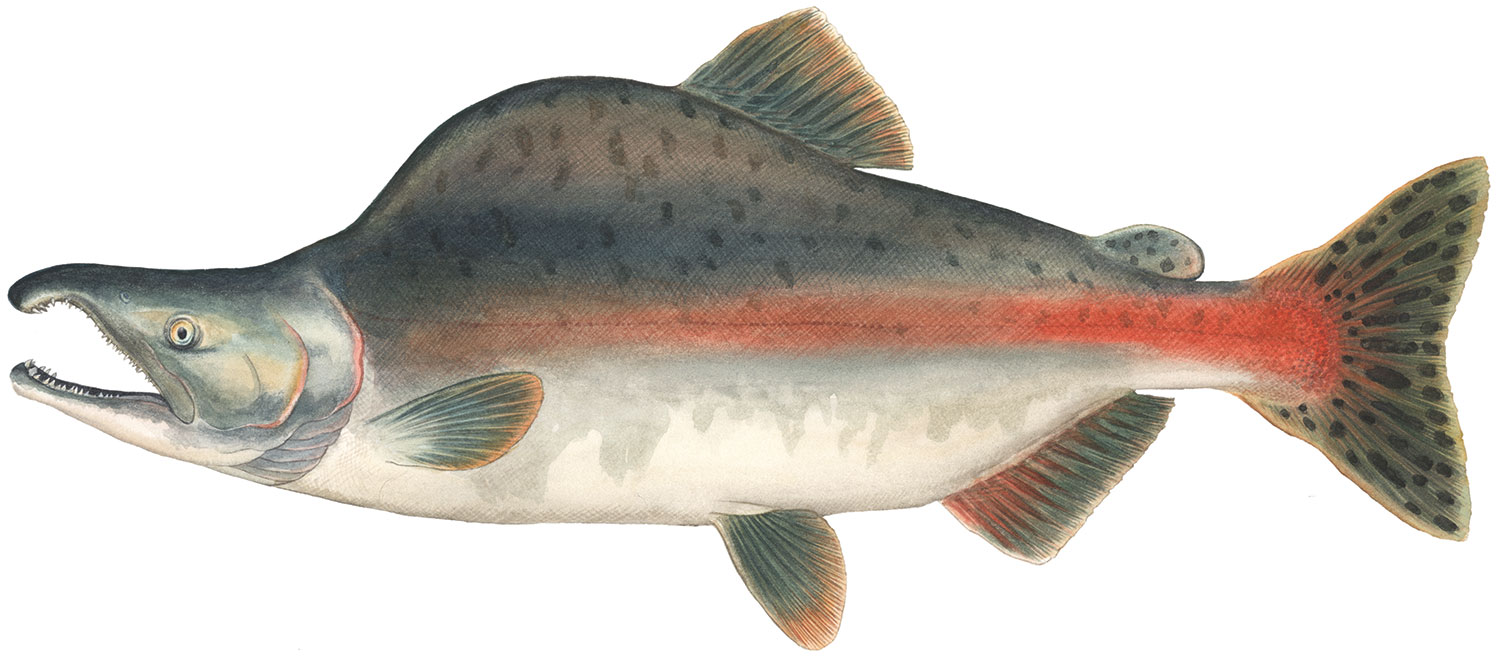
Scientific name
Oncorhynchus gorbuscha
Abundance
Pink salmon is the most abundant species of North Pacific salmon, particularly at higher latitudes.
Size
On average, pink salmon weigh about 3 – 5.5 pounds (1.5 – 2.5 kg) and measure up to 25 inches (75 cm) in length.
Life history

Among Pacific salmon, pink salmon are least dependent on the freshwater environment and begin ocean migration immediately upon emerging from the redd. Pink mature after two summers at sea, whereupon they begin their migration to natal waters. With a predictable two-year life cycle, these fish are present in even- or odd-year cohorts, which are reproductively isolated, even among those sharing watershed spawning grounds. Because these populations are genetically distinct, biologists can distinguish “even-year” and “odd-year” classes.
Cultural role
Traditionally, pink salmon were consumed in fishing season but were overlooked during the winter because they did not preserve well. (The species has the lowest oil content of any of the Pacific salmon species.) Demand for pink salmon increased dramatically, however, with the advent of canning technology during the mid- to late 19th century. Pink are also preserved by drying or smoking by many Indigenous Peoples.
Today pink harvest represents nearly half the biomass of commercial North Pacific Oncorhynchus catch and more than half the total catch in numbers of fish.
